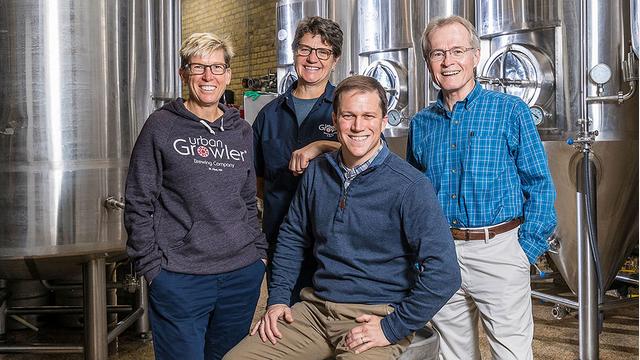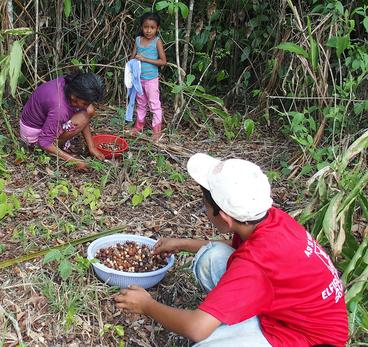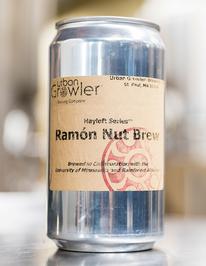Dean Current, director of the Center for Integrated Natural Resource and
Agricultural Management (Photo: David Turner)
Story by Susan Maas | Photos by David Turner and Dave Wilsey
From a lush tropical forest in northern Guatemala to a microbrewery in St. Paul, the humble, acorn-sized ramón nut is spurring big changes.
The ramón nut—actually the seed of a fruit that falls to the forest floor in northern Guatemala—is believed to have been a Mayan dietary staple for millennia. Today it’s experiencing a renaissance: helping feed forest communities once again and boosting sustainable economic development in the region.
Thanks to the Master of Development Practice (MDP) program—offered jointly by the Humphrey School of Public Affairs and the Interdisciplinary Center for the Study of Global Change—it’s also enchanting beer lovers in the Twin Cities.
When it’s roasted, the ramón nut has a coffee-like flavor with notes of chocolate; perfect for incorporating into ale or stout. That’s the idea that David Wilsey, director of the MDP program, and colleague Dean Current in the College of Food, Agricultural and Natural Resources Sciences, had last year. So Wilsey worked with MDP students and others to make it happen.
Guatemala. Photo: Dave Wilsey
They secured a small grant from the University of Minnesota’s Institute on the Environment and approached Urban Growler, a microbrewery in St. Paul. Owners Deb Loch and Jill Pavlak leapt at the chance to create a couple of new brews with the nut.
Unveiled in mid-March, the ramón nut brown ale sold out within days; its counterpart, a stout, lasted a few weeks longer.
The seed, which is rich in fiber, potassium, and calcium, was traditionally ground into flour or eaten raw. Given the hardiness of ramón nut trees, their abundance, and the fact that harvesting the nuts poses no threat to the forest, Wilsey believes the nut has “untapped” (beer pun not intended) potential as a tool of economic empowerment for people who live in the Maya Biosphere Reserve in Guatemala.
Not-so-nutty idea
As forest residents started using ramón nut flour commercially in breads, tamales, cookies, and other baked goods, Wilsey and Current wondered whether there might be a fair trade export market for the nut. That’s where the Humphrey MDP students became active.
“We’ve had two student teams go to Guatemala to look at non-timber forest products generally, and another looking at ramón specifically,” Wilsey says.
The Humphrey MDP program averages about 16 students a year; some small teams of three or four students have done direct fieldwork in the biosphere reserve, while others have worked on a related capstone project back in Minnesota. Creating market analyses is among their endeavors; this spring, several MDP students began assessing the viability of trading honey from the biosphere reserve.
Growler. Photo: David Turner
But the beer was Wilsey’s idea, and his students helped make it happen. Their concept was to have a fun and tasty way to interest other Twin Citians in the biosphere reserve and the local communities protecting it.
The endeavor was so successful that Loch and Pavlak developed two more ramón nut brews—a lager and a brown ale—for Urban Growler’s fourth anniversary celebration in August. And they are eager to continue their involvement in the project going forward.
Wilsey says the beer venture has achieved an important goal in bringing together students, environmental activists, forest communities, and policymakers.
“The Urban Growler endeavor wasn’t really about making a beer or two, though that was pretty darn fun. It was about creating excitement, allowing us to bring people together to educate them on something they know little about,” Wilsey says. “People ‘get’ the beer, and it really brought more energy and awareness.”
Susan Maas is a Minneapolis-based freelance writer and editor.
A longer version of this story was originally published in Humphrey magazine




